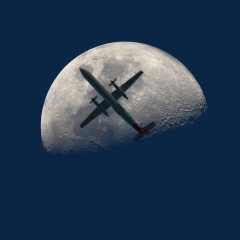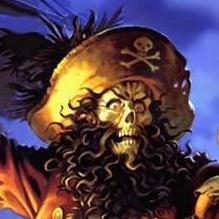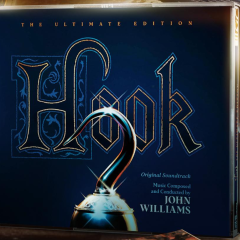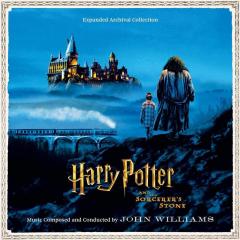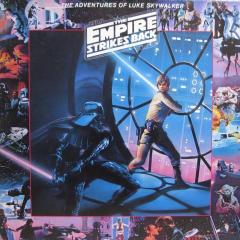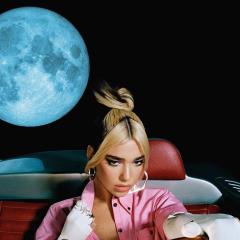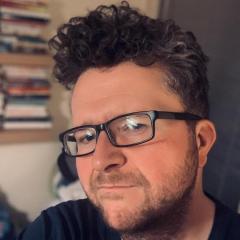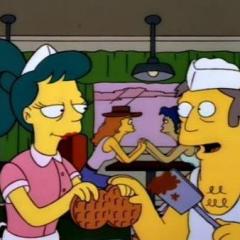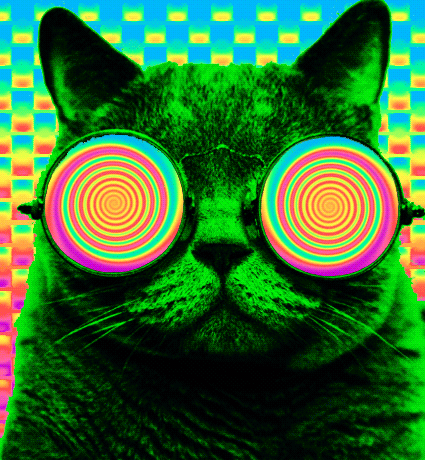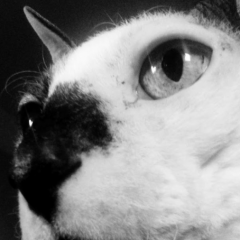-
Posts
5,000 -
Joined
-
Last visited
-
Days Won
4
Reputation Activity
-
 Docteur Qui got a reaction from Brando in OBI-WAN KENOBI (Disney+ series)
Docteur Qui got a reaction from Brando in OBI-WAN KENOBI (Disney+ series)
You mean to say that Star Wars - the media franchise whose second movie ever completely invented a familial relationship between the original hero and villain; whose third movie fabricated a sibling relationship between the main male and female characters; whose fourth movie had aforementioned villain be the creator/owner of the droid duo from the originals; whose fifth movie invented a conflict between a minor bounty hunter character and the mentor character from the original; whose sixth movie depicts its female lead dying in childbirth despite her only daughter explicitly mentioning she remembered her in the third one; whose ninth main film completely fabricates a familial relationship between its new protagonist and the archvillain from the first six films - is playing fast and loose with continuity?
Shocked, I say!
-
 Docteur Qui got a reaction from LSH in OBI-WAN KENOBI (Disney+ series)
Docteur Qui got a reaction from LSH in OBI-WAN KENOBI (Disney+ series)
You mean to say that Star Wars - the media franchise whose second movie ever completely invented a familial relationship between the original hero and villain; whose third movie fabricated a sibling relationship between the main male and female characters; whose fourth movie had aforementioned villain be the creator/owner of the droid duo from the originals; whose fifth movie invented a conflict between a minor bounty hunter character and the mentor character from the original; whose sixth movie depicts its female lead dying in childbirth despite her only daughter explicitly mentioning she remembered her in the third one; whose ninth main film completely fabricates a familial relationship between its new protagonist and the archvillain from the first six films - is playing fast and loose with continuity?
Shocked, I say!
-
 Docteur Qui got a reaction from Romão in OBI-WAN KENOBI (Disney+ series)
Docteur Qui got a reaction from Romão in OBI-WAN KENOBI (Disney+ series)
You mean to say that Star Wars - the media franchise whose second movie ever completely invented a familial relationship between the original hero and villain; whose third movie fabricated a sibling relationship between the main male and female characters; whose fourth movie had aforementioned villain be the creator/owner of the droid duo from the originals; whose fifth movie invented a conflict between a minor bounty hunter character and the mentor character from the original; whose sixth movie depicts its female lead dying in childbirth despite her only daughter explicitly mentioning she remembered her in the third one; whose ninth main film completely fabricates a familial relationship between its new protagonist and the archvillain from the first six films - is playing fast and loose with continuity?
Shocked, I say!
-
 Docteur Qui got a reaction from Jay in OBI-WAN KENOBI (Disney+ series)
Docteur Qui got a reaction from Jay in OBI-WAN KENOBI (Disney+ series)
You mean to say that Star Wars - the media franchise whose second movie ever completely invented a familial relationship between the original hero and villain; whose third movie fabricated a sibling relationship between the main male and female characters; whose fourth movie had aforementioned villain be the creator/owner of the droid duo from the originals; whose fifth movie invented a conflict between a minor bounty hunter character and the mentor character from the original; whose sixth movie depicts its female lead dying in childbirth despite her only daughter explicitly mentioning she remembered her in the third one; whose ninth main film completely fabricates a familial relationship between its new protagonist and the archvillain from the first six films - is playing fast and loose with continuity?
Shocked, I say!
-
 Docteur Qui reacted to Sweeping Strings in The Doctor Who Thread.....
Docteur Qui reacted to Sweeping Strings in The Doctor Who Thread.....
Ah, the Doctor's contradictory behaviour ... we could be here all day. Empathetic sometimes and coldly objective at others, anti-violence (except when he/she isn't), only interested in the companions in a friendly way (except for 9/10 and Rose) etc etc etc.
-
 Docteur Qui got a reaction from Molly Weasley in The Doctor Who Thread.....
Docteur Qui got a reaction from Molly Weasley in The Doctor Who Thread.....
I've always interpreted the Doctor's "choice" of face and personality not so much being a choice, but a quirk of Time Lord/Gallifreyan evolution; a survival mechanism designed to address some deep need of their subconscious to adapt and survive based on their surrounding environment or as a direct response to recent experiences. I've got a few head-canon theories as to why this works for me, not all of which is my original thinking but peppered with ideas that other fans have come up with over the years and probably even discussed here. The evidence I have is just based in Nu-Who, and often supported dialogue in the show (particularly Moffat's era, who makes a lot of these things explicit in the text). Here's my thoughts:
- War regenerated into 9, going from a tragic and grizzled warrior to an everyday man. Someone who could easily blend in (ears notwithstanding), isn't overtly eccentric and who has an easy charisma, textured with some sternness and hardness. It reflects his subconscious yearning to connect with people after the devastating Time War and the destruction of his entire race, but in a very guarded way.
- 9 regenerated into 10, a dashing, romantic, suave and energetic person with boyish good looks and a cheeky demeanour. This is largely due to his relationship with Rose, to become more like her (down to the cockney-light accent) and be the man she wanted. Her impact on him is obviously pretty significant; their connection allowed him to open up and as a result he wanted a bit of everything. He's the first openly sexual Doctor in this sense - a bit of a hedonist who enjoys the sensory delights and passions of life.
- 10 regenerated into 11, a fairy-tale character with an impossibly proportioned face and limbs more rubbery than a Warner Bros cartoon. After the deep trauma he experienced in his previous incarnation, this one is a lot more child-like in his appearance and interactions with the world (give or take some sexy banter), and generally more of an optimist than 10 ever was.
11 regenerated into 12, a spiky and aloof older man who, unlike the last few incarnations, finds it very difficult to connect with other people. I see this as reflecting the shame and guilt of how he manipulated people with his previous boyish appearance (especially Clara), instead opting for a face mirroring his actual age and alienness (those bug eyes and brows!). This is explicitly supported by Vastra's interrogation of Clara in Deep Breath:
Clara: You said renewed. He doesn’t look renewed. He looks… older.
Madame Vastra: You thought he was young?
Clara: He looked young.
Madame Vastra: He looked like your dashing young gentleman friend. Your lover even.
Clara: Shut up.
Madame Vastra: But he is the Doctor. He has walked this universe for centuries untold. He has seen stars fall to dust. You might as well flirt with a mountain range.
Clara: I did not flirt with him.
Madame Vastra: He flirted with you.
Clara: How?
Madame Vastra: He looked young. Who do you think that was for?
Clara: Me?
Madame Vastra: Everyone.
I also see Twelve as the first revival Doctor who is no longer burdened by the Time War and who was able to move on, so a lot of his coping mechanisms (including the heightened empathy) are completely reset, "factory default" if you will. There's also the Caecilius connection which is addressed on-screen, but I don't think that necessarily contradicts any of the other points, as the faces of the Doctor always serve multiple purposes.
Then we have 12 regenerating into 13. This one's a lot harder to pin down, largely due to Chibnall's hesitance to depict her beyond the superficial traits or examine the character of the Doctor in a meta way like Moffat frequently did. She's often contradictory, vacillating between being incredibly empathetic to almost callous in her dismissal of her companions emotional wellbeing (not to mention her gleeful triple-mass murders in Flux or leaving the Master to be killed by Nazis) . Thirteen emerges only after Twelve seriously considered ending his life (when he "refused" to regenerate), but was reminded of the good that he achieved in the past by Bill/Testament as well as his first incarnation. A lot of her personality echoes 10 (and 11) in so many ways, down to the eccentric speech pattern, so it could be seen as a reaffirmation of those qualities, a "greatest hits" compilation. In terms of the change in gender, I haven't really found anything really compelling to offer, but that could also be seen as evident of the fact that Time Lords don't appear to have concrete gender roles (at least as depicted in the revival, and at the very least not in the sense that we do). A change of sex may not have been a subconscious need as it was just the result of genetic probability.
I know this is all pretty obviously just fanwank, as the real-life explanations for the faces is far more straightforward, but the show has always invited fans to think about things in this way.
-
 Docteur Qui got a reaction from Tallguy in The Doctor Who Thread.....
Docteur Qui got a reaction from Tallguy in The Doctor Who Thread.....
I've always interpreted the Doctor's "choice" of face and personality not so much being a choice, but a quirk of Time Lord/Gallifreyan evolution; a survival mechanism designed to address some deep need of their subconscious to adapt and survive based on their surrounding environment or as a direct response to recent experiences. I've got a few head-canon theories as to why this works for me, not all of which is my original thinking but peppered with ideas that other fans have come up with over the years and probably even discussed here. The evidence I have is just based in Nu-Who, and often supported dialogue in the show (particularly Moffat's era, who makes a lot of these things explicit in the text). Here's my thoughts:
- War regenerated into 9, going from a tragic and grizzled warrior to an everyday man. Someone who could easily blend in (ears notwithstanding), isn't overtly eccentric and who has an easy charisma, textured with some sternness and hardness. It reflects his subconscious yearning to connect with people after the devastating Time War and the destruction of his entire race, but in a very guarded way.
- 9 regenerated into 10, a dashing, romantic, suave and energetic person with boyish good looks and a cheeky demeanour. This is largely due to his relationship with Rose, to become more like her (down to the cockney-light accent) and be the man she wanted. Her impact on him is obviously pretty significant; their connection allowed him to open up and as a result he wanted a bit of everything. He's the first openly sexual Doctor in this sense - a bit of a hedonist who enjoys the sensory delights and passions of life.
- 10 regenerated into 11, a fairy-tale character with an impossibly proportioned face and limbs more rubbery than a Warner Bros cartoon. After the deep trauma he experienced in his previous incarnation, this one is a lot more child-like in his appearance and interactions with the world (give or take some sexy banter), and generally more of an optimist than 10 ever was.
11 regenerated into 12, a spiky and aloof older man who, unlike the last few incarnations, finds it very difficult to connect with other people. I see this as reflecting the shame and guilt of how he manipulated people with his previous boyish appearance (especially Clara), instead opting for a face mirroring his actual age and alienness (those bug eyes and brows!). This is explicitly supported by Vastra's interrogation of Clara in Deep Breath:
Clara: You said renewed. He doesn’t look renewed. He looks… older.
Madame Vastra: You thought he was young?
Clara: He looked young.
Madame Vastra: He looked like your dashing young gentleman friend. Your lover even.
Clara: Shut up.
Madame Vastra: But he is the Doctor. He has walked this universe for centuries untold. He has seen stars fall to dust. You might as well flirt with a mountain range.
Clara: I did not flirt with him.
Madame Vastra: He flirted with you.
Clara: How?
Madame Vastra: He looked young. Who do you think that was for?
Clara: Me?
Madame Vastra: Everyone.
I also see Twelve as the first revival Doctor who is no longer burdened by the Time War and who was able to move on, so a lot of his coping mechanisms (including the heightened empathy) are completely reset, "factory default" if you will. There's also the Caecilius connection which is addressed on-screen, but I don't think that necessarily contradicts any of the other points, as the faces of the Doctor always serve multiple purposes.
Then we have 12 regenerating into 13. This one's a lot harder to pin down, largely due to Chibnall's hesitance to depict her beyond the superficial traits or examine the character of the Doctor in a meta way like Moffat frequently did. She's often contradictory, vacillating between being incredibly empathetic to almost callous in her dismissal of her companions emotional wellbeing (not to mention her gleeful triple-mass murders in Flux or leaving the Master to be killed by Nazis) . Thirteen emerges only after Twelve seriously considered ending his life (when he "refused" to regenerate), but was reminded of the good that he achieved in the past by Bill/Testament as well as his first incarnation. A lot of her personality echoes 10 (and 11) in so many ways, down to the eccentric speech pattern, so it could be seen as a reaffirmation of those qualities, a "greatest hits" compilation. In terms of the change in gender, I haven't really found anything really compelling to offer, but that could also be seen as evident of the fact that Time Lords don't appear to have concrete gender roles (at least as depicted in the revival, and at the very least not in the sense that we do). A change of sex may not have been a subconscious need as it was just the result of genetic probability.
I know this is all pretty obviously just fanwank, as the real-life explanations for the faces is far more straightforward, but the show has always invited fans to think about things in this way.
-
 Docteur Qui got a reaction from Marian Schedenig in The Doctor Who Thread.....
Docteur Qui got a reaction from Marian Schedenig in The Doctor Who Thread.....
I've always interpreted the Doctor's "choice" of face and personality not so much being a choice, but a quirk of Time Lord/Gallifreyan evolution; a survival mechanism designed to address some deep need of their subconscious to adapt and survive based on their surrounding environment or as a direct response to recent experiences. I've got a few head-canon theories as to why this works for me, not all of which is my original thinking but peppered with ideas that other fans have come up with over the years and probably even discussed here. The evidence I have is just based in Nu-Who, and often supported dialogue in the show (particularly Moffat's era, who makes a lot of these things explicit in the text). Here's my thoughts:
- War regenerated into 9, going from a tragic and grizzled warrior to an everyday man. Someone who could easily blend in (ears notwithstanding), isn't overtly eccentric and who has an easy charisma, textured with some sternness and hardness. It reflects his subconscious yearning to connect with people after the devastating Time War and the destruction of his entire race, but in a very guarded way.
- 9 regenerated into 10, a dashing, romantic, suave and energetic person with boyish good looks and a cheeky demeanour. This is largely due to his relationship with Rose, to become more like her (down to the cockney-light accent) and be the man she wanted. Her impact on him is obviously pretty significant; their connection allowed him to open up and as a result he wanted a bit of everything. He's the first openly sexual Doctor in this sense - a bit of a hedonist who enjoys the sensory delights and passions of life.
- 10 regenerated into 11, a fairy-tale character with an impossibly proportioned face and limbs more rubbery than a Warner Bros cartoon. After the deep trauma he experienced in his previous incarnation, this one is a lot more child-like in his appearance and interactions with the world (give or take some sexy banter), and generally more of an optimist than 10 ever was.
11 regenerated into 12, a spiky and aloof older man who, unlike the last few incarnations, finds it very difficult to connect with other people. I see this as reflecting the shame and guilt of how he manipulated people with his previous boyish appearance (especially Clara), instead opting for a face mirroring his actual age and alienness (those bug eyes and brows!). This is explicitly supported by Vastra's interrogation of Clara in Deep Breath:
Clara: You said renewed. He doesn’t look renewed. He looks… older.
Madame Vastra: You thought he was young?
Clara: He looked young.
Madame Vastra: He looked like your dashing young gentleman friend. Your lover even.
Clara: Shut up.
Madame Vastra: But he is the Doctor. He has walked this universe for centuries untold. He has seen stars fall to dust. You might as well flirt with a mountain range.
Clara: I did not flirt with him.
Madame Vastra: He flirted with you.
Clara: How?
Madame Vastra: He looked young. Who do you think that was for?
Clara: Me?
Madame Vastra: Everyone.
I also see Twelve as the first revival Doctor who is no longer burdened by the Time War and who was able to move on, so a lot of his coping mechanisms (including the heightened empathy) are completely reset, "factory default" if you will. There's also the Caecilius connection which is addressed on-screen, but I don't think that necessarily contradicts any of the other points, as the faces of the Doctor always serve multiple purposes.
Then we have 12 regenerating into 13. This one's a lot harder to pin down, largely due to Chibnall's hesitance to depict her beyond the superficial traits or examine the character of the Doctor in a meta way like Moffat frequently did. She's often contradictory, vacillating between being incredibly empathetic to almost callous in her dismissal of her companions emotional wellbeing (not to mention her gleeful triple-mass murders in Flux or leaving the Master to be killed by Nazis) . Thirteen emerges only after Twelve seriously considered ending his life (when he "refused" to regenerate), but was reminded of the good that he achieved in the past by Bill/Testament as well as his first incarnation. A lot of her personality echoes 10 (and 11) in so many ways, down to the eccentric speech pattern, so it could be seen as a reaffirmation of those qualities, a "greatest hits" compilation. In terms of the change in gender, I haven't really found anything really compelling to offer, but that could also be seen as evident of the fact that Time Lords don't appear to have concrete gender roles (at least as depicted in the revival, and at the very least not in the sense that we do). A change of sex may not have been a subconscious need as it was just the result of genetic probability.
I know this is all pretty obviously just fanwank, as the real-life explanations for the faces is far more straightforward, but the show has always invited fans to think about things in this way.
-
 Docteur Qui got a reaction from Richard Penna in The Doctor Who Thread.....
Docteur Qui got a reaction from Richard Penna in The Doctor Who Thread.....
I've always interpreted the Doctor's "choice" of face and personality not so much being a choice, but a quirk of Time Lord/Gallifreyan evolution; a survival mechanism designed to address some deep need of their subconscious to adapt and survive based on their surrounding environment or as a direct response to recent experiences. I've got a few head-canon theories as to why this works for me, not all of which is my original thinking but peppered with ideas that other fans have come up with over the years and probably even discussed here. The evidence I have is just based in Nu-Who, and often supported dialogue in the show (particularly Moffat's era, who makes a lot of these things explicit in the text). Here's my thoughts:
- War regenerated into 9, going from a tragic and grizzled warrior to an everyday man. Someone who could easily blend in (ears notwithstanding), isn't overtly eccentric and who has an easy charisma, textured with some sternness and hardness. It reflects his subconscious yearning to connect with people after the devastating Time War and the destruction of his entire race, but in a very guarded way.
- 9 regenerated into 10, a dashing, romantic, suave and energetic person with boyish good looks and a cheeky demeanour. This is largely due to his relationship with Rose, to become more like her (down to the cockney-light accent) and be the man she wanted. Her impact on him is obviously pretty significant; their connection allowed him to open up and as a result he wanted a bit of everything. He's the first openly sexual Doctor in this sense - a bit of a hedonist who enjoys the sensory delights and passions of life.
- 10 regenerated into 11, a fairy-tale character with an impossibly proportioned face and limbs more rubbery than a Warner Bros cartoon. After the deep trauma he experienced in his previous incarnation, this one is a lot more child-like in his appearance and interactions with the world (give or take some sexy banter), and generally more of an optimist than 10 ever was.
11 regenerated into 12, a spiky and aloof older man who, unlike the last few incarnations, finds it very difficult to connect with other people. I see this as reflecting the shame and guilt of how he manipulated people with his previous boyish appearance (especially Clara), instead opting for a face mirroring his actual age and alienness (those bug eyes and brows!). This is explicitly supported by Vastra's interrogation of Clara in Deep Breath:
Clara: You said renewed. He doesn’t look renewed. He looks… older.
Madame Vastra: You thought he was young?
Clara: He looked young.
Madame Vastra: He looked like your dashing young gentleman friend. Your lover even.
Clara: Shut up.
Madame Vastra: But he is the Doctor. He has walked this universe for centuries untold. He has seen stars fall to dust. You might as well flirt with a mountain range.
Clara: I did not flirt with him.
Madame Vastra: He flirted with you.
Clara: How?
Madame Vastra: He looked young. Who do you think that was for?
Clara: Me?
Madame Vastra: Everyone.
I also see Twelve as the first revival Doctor who is no longer burdened by the Time War and who was able to move on, so a lot of his coping mechanisms (including the heightened empathy) are completely reset, "factory default" if you will. There's also the Caecilius connection which is addressed on-screen, but I don't think that necessarily contradicts any of the other points, as the faces of the Doctor always serve multiple purposes.
Then we have 12 regenerating into 13. This one's a lot harder to pin down, largely due to Chibnall's hesitance to depict her beyond the superficial traits or examine the character of the Doctor in a meta way like Moffat frequently did. She's often contradictory, vacillating between being incredibly empathetic to almost callous in her dismissal of her companions emotional wellbeing (not to mention her gleeful triple-mass murders in Flux or leaving the Master to be killed by Nazis) . Thirteen emerges only after Twelve seriously considered ending his life (when he "refused" to regenerate), but was reminded of the good that he achieved in the past by Bill/Testament as well as his first incarnation. A lot of her personality echoes 10 (and 11) in so many ways, down to the eccentric speech pattern, so it could be seen as a reaffirmation of those qualities, a "greatest hits" compilation. In terms of the change in gender, I haven't really found anything really compelling to offer, but that could also be seen as evident of the fact that Time Lords don't appear to have concrete gender roles (at least as depicted in the revival, and at the very least not in the sense that we do). A change of sex may not have been a subconscious need as it was just the result of genetic probability.
I know this is all pretty obviously just fanwank, as the real-life explanations for the faces is far more straightforward, but the show has always invited fans to think about things in this way.
-
 Docteur Qui got a reaction from Tom Guernsey in The Doctor Who Thread.....
Docteur Qui got a reaction from Tom Guernsey in The Doctor Who Thread.....
I've always interpreted the Doctor's "choice" of face and personality not so much being a choice, but a quirk of Time Lord/Gallifreyan evolution; a survival mechanism designed to address some deep need of their subconscious to adapt and survive based on their surrounding environment or as a direct response to recent experiences. I've got a few head-canon theories as to why this works for me, not all of which is my original thinking but peppered with ideas that other fans have come up with over the years and probably even discussed here. The evidence I have is just based in Nu-Who, and often supported dialogue in the show (particularly Moffat's era, who makes a lot of these things explicit in the text). Here's my thoughts:
- War regenerated into 9, going from a tragic and grizzled warrior to an everyday man. Someone who could easily blend in (ears notwithstanding), isn't overtly eccentric and who has an easy charisma, textured with some sternness and hardness. It reflects his subconscious yearning to connect with people after the devastating Time War and the destruction of his entire race, but in a very guarded way.
- 9 regenerated into 10, a dashing, romantic, suave and energetic person with boyish good looks and a cheeky demeanour. This is largely due to his relationship with Rose, to become more like her (down to the cockney-light accent) and be the man she wanted. Her impact on him is obviously pretty significant; their connection allowed him to open up and as a result he wanted a bit of everything. He's the first openly sexual Doctor in this sense - a bit of a hedonist who enjoys the sensory delights and passions of life.
- 10 regenerated into 11, a fairy-tale character with an impossibly proportioned face and limbs more rubbery than a Warner Bros cartoon. After the deep trauma he experienced in his previous incarnation, this one is a lot more child-like in his appearance and interactions with the world (give or take some sexy banter), and generally more of an optimist than 10 ever was.
11 regenerated into 12, a spiky and aloof older man who, unlike the last few incarnations, finds it very difficult to connect with other people. I see this as reflecting the shame and guilt of how he manipulated people with his previous boyish appearance (especially Clara), instead opting for a face mirroring his actual age and alienness (those bug eyes and brows!). This is explicitly supported by Vastra's interrogation of Clara in Deep Breath:
Clara: You said renewed. He doesn’t look renewed. He looks… older.
Madame Vastra: You thought he was young?
Clara: He looked young.
Madame Vastra: He looked like your dashing young gentleman friend. Your lover even.
Clara: Shut up.
Madame Vastra: But he is the Doctor. He has walked this universe for centuries untold. He has seen stars fall to dust. You might as well flirt with a mountain range.
Clara: I did not flirt with him.
Madame Vastra: He flirted with you.
Clara: How?
Madame Vastra: He looked young. Who do you think that was for?
Clara: Me?
Madame Vastra: Everyone.
I also see Twelve as the first revival Doctor who is no longer burdened by the Time War and who was able to move on, so a lot of his coping mechanisms (including the heightened empathy) are completely reset, "factory default" if you will. There's also the Caecilius connection which is addressed on-screen, but I don't think that necessarily contradicts any of the other points, as the faces of the Doctor always serve multiple purposes.
Then we have 12 regenerating into 13. This one's a lot harder to pin down, largely due to Chibnall's hesitance to depict her beyond the superficial traits or examine the character of the Doctor in a meta way like Moffat frequently did. She's often contradictory, vacillating between being incredibly empathetic to almost callous in her dismissal of her companions emotional wellbeing (not to mention her gleeful triple-mass murders in Flux or leaving the Master to be killed by Nazis) . Thirteen emerges only after Twelve seriously considered ending his life (when he "refused" to regenerate), but was reminded of the good that he achieved in the past by Bill/Testament as well as his first incarnation. A lot of her personality echoes 10 (and 11) in so many ways, down to the eccentric speech pattern, so it could be seen as a reaffirmation of those qualities, a "greatest hits" compilation. In terms of the change in gender, I haven't really found anything really compelling to offer, but that could also be seen as evident of the fact that Time Lords don't appear to have concrete gender roles (at least as depicted in the revival, and at the very least not in the sense that we do). A change of sex may not have been a subconscious need as it was just the result of genetic probability.
I know this is all pretty obviously just fanwank, as the real-life explanations for the faces is far more straightforward, but the show has always invited fans to think about things in this way.
-

-
 Docteur Qui reacted to mstrox in OBI-WAN KENOBI (Disney+ series)
Docteur Qui reacted to mstrox in OBI-WAN KENOBI (Disney+ series)
For the most part, being around a wall of people bitching about something you enjoy just isn’t fun! It wasn’t fun for me around here for TLJ or basically any SW thing that followed. And in that specific company, expressing appreciation often will either lead to radio silence or somebody deciding to rebut your subjective taste as if trying to win points in The Debate.
I also don’t think it’s “fixable!” People that don’t like things have every right to discuss them as people who do. I’m sure the people on this board who liked the prequels or The Hobbit movies are tired of people like me shitting on them. What to one person feels like commiserating among a group of people with the same opinions can just feel suffocating to people who share differing ones!
But I’d be happy to pile into an appreciation thread or a No Homers PM.
-
 Docteur Qui reacted to Jay in OBI-WAN KENOBI (Disney+ series)
Docteur Qui reacted to Jay in OBI-WAN KENOBI (Disney+ series)
The actors Georgie boy cast ~20 years ago have aged nicely towards who he cast 45 years ago for the same characters
-
 Docteur Qui got a reaction from mstrox in Fantastic Beasts And Where To Find Them 5-film series
Docteur Qui got a reaction from mstrox in Fantastic Beasts And Where To Find Them 5-film series
Hmmm, I probably won't read that. Mainly just because if I do end up watching it (which will be when it lands on a streaming service I already have) I'd like to have some engagement with how it's meant to be told.
Also, not to derail or engage in controversy, but I really hate the culture of plot leaks. It always ends up painting the film/book/show in broad strokes, reducing it to plot points and revelations and missing any sense of nuance or authorial intent. I know that's ironic considering my recent posts on this particular film series, but (my thoughts of JKR's opinions or talent notwithstanding) I always try to engage with art on its own terms before formulating an opinion. It recently happened with Game of Thrones and The Last Jedi; so many people read leaked information and hated what they read, going into the film/episodes already angry and not engaging with how those events are depicted and what the implications were. It only serves to muddy the discourse around the art in question, and further removes nuance from discussions about why we like or dislike the art we engage with. And on top of that it devalues the skills and craft of directors, screenwriters, editors, composers, effects artists etc etc when those plot elements are removed from context.
Anyways, the movie still looks garbage, but if I am to call it garbage I'm only going to do so after I see it.
-
 Docteur Qui got a reaction from DarthDementous in Fantastic Beasts And Where To Find Them 5-film series
Docteur Qui got a reaction from DarthDementous in Fantastic Beasts And Where To Find Them 5-film series
Hmmm, I probably won't read that. Mainly just because if I do end up watching it (which will be when it lands on a streaming service I already have) I'd like to have some engagement with how it's meant to be told.
Also, not to derail or engage in controversy, but I really hate the culture of plot leaks. It always ends up painting the film/book/show in broad strokes, reducing it to plot points and revelations and missing any sense of nuance or authorial intent. I know that's ironic considering my recent posts on this particular film series, but (my thoughts of JKR's opinions or talent notwithstanding) I always try to engage with art on its own terms before formulating an opinion. It recently happened with Game of Thrones and The Last Jedi; so many people read leaked information and hated what they read, going into the film/episodes already angry and not engaging with how those events are depicted and what the implications were. It only serves to muddy the discourse around the art in question, and further removes nuance from discussions about why we like or dislike the art we engage with. And on top of that it devalues the skills and craft of directors, screenwriters, editors, composers, effects artists etc etc when those plot elements are removed from context.
Anyways, the movie still looks garbage, but if I am to call it garbage I'm only going to do so after I see it.
-
 Docteur Qui got a reaction from crumbs in BETTER CALL SAUL
Docteur Qui got a reaction from crumbs in BETTER CALL SAUL
Ugh why do they region lock trailers like this? The show is going to be released on a streaming platform here in Australia around the time it's released in the US. But they aren't showing the trailer either. It's maddening!
EDIT - Thankfully it's here on the BCS Youtube channel:
-
 Docteur Qui got a reaction from LSH in BETTER CALL SAUL
Docteur Qui got a reaction from LSH in BETTER CALL SAUL
Ugh why do they region lock trailers like this? The show is going to be released on a streaming platform here in Australia around the time it's released in the US. But they aren't showing the trailer either. It's maddening!
EDIT - Thankfully it's here on the BCS Youtube channel:
-
 Docteur Qui got a reaction from bruce marshall in BETTER CALL SAUL
Docteur Qui got a reaction from bruce marshall in BETTER CALL SAUL
Ugh why do they region lock trailers like this? The show is going to be released on a streaming platform here in Australia around the time it's released in the US. But they aren't showing the trailer either. It's maddening!
EDIT - Thankfully it's here on the BCS Youtube channel:
-

-
 Docteur Qui reacted to Falstaft in Analysis of John Williams Violin Concerto No. 2
Docteur Qui reacted to Falstaft in Analysis of John Williams Violin Concerto No. 2
Hi everyone. I thought it might be useful to put together a listening guide of sorts for Williams's second violin concerto. This struck me as appropriate given how it's going to be heard in performance again fairly soon. Also, the piece, particularly its first movement, is fairly difficult to grasp on first listen!
I've only put together a guide to the first movement (by far the most challenging), but if this is indeed helpful I'll consider doing the other three--or maybe someone else would like to. It's quite difficult to do this without a score, to put it mildly, so take everything here as provisional. I'm surely missing quite a lot of important details...
Listening Guide for John Williams, Violin Concerto 2
MOVEMENT 1: "PROLOGUE"
Overall, the most formally loose and spontaneous-seeming movement, fitting given Williams's striving for a "quasi-improvisatory" character. Not a truly non-repetitive piece, however: there are both aspects of inner-movement unity and some subtle prefiguring of material to come, particularly the concerto's principle "leitmotif" introduced in the 2nd Movement. The unpredictability of the music on a measure-to-measure level is compensated by an extremely clear division of 6 large-scale sections, summarized below.
More in-depth account:
SECTION 1 – INTRODUCTION
0:00 Quiet, slow introduction showcasing harp, supported by bed of strings. Shape of opening harp melody (D3-E3, D3-E3-C3-A3-D3) vaguely anticipates some later motivic details. First harp-based subphrase tonally centered on B♭-lydian, with contrasting Gm6(♭13) in middle. Second, string-based subphrase more dissonant, melodically disjunct. The third, once again harp-based subphrase coalesces on Dmaj6/min chord. 1:11 Introduction of soloist. Violin begins with repetition of note F4, giving bluesy quality to faint D-major tonality maintained by strings/harp. Melodic D tonic flanked by tritones A♭4 & G♯3 above and below. Progressively expands range upward, with what will become a quasi-motivic repeated note figure, here on B♭4 and E♭5. Thinner texture and new harmonies (F♯m and A-dim) and octatonic scale-fragment in violin at 1:50, followed by downwards chromatic cascades and melodic peak of E♭6. Unaccompanied violin sags glumly back downwards.
SECTION 2 – FAST AND TURBULENT
2:24 Pulsing, agitated pattern in orchestra midrange on dissonant harmony (A3+B♭3+C4+ D♭4), supported at unpredictable intervals by rising bass-figure starting on low D. Violin gathers energy with repetition of Eb4, proceeds to a flowing, unpredictable musical thought, up to the first of several big orchestral swells marked by dissonant chord and percussive punctuation that swallows up soloist. 2:46 Violin reasserts itself over motivic rising bass-figure. Pace of textural and melodic change speeds up considerably, and music becomes increasingly key-less, violin and orchestra exchanging frenzied, short-lived ideas. Particular prominence to harp, timpani, clarinet. Low-strings trace downwards arpeggio of important Gm9 chord, echoed by violin (3:09), and Em9♭5, F♯dim7. 3:16 Lighter but more dissonant texture. Spiky, progressively accelerating violin writing against unpredictable staccato wind and pizzicato bursts. 3:33 Arpeggiating eighth-note figures in low strings resume, now upwards (D2-B♭2-D3-G2-C3-E♭3, etc.), quickly losing tonal focus as another dissonant tutti swell overtakes violin, followed by brief timpani solo (3:44). 3:46 Purely orchestral climax. Dissonant pitch pyramid assembled over B pedal. Similarly vaulting bass figures under now unified upper strings in octaves on urgent melody, arching upwards in successive swells. Pulsing/sustained brass and string melody help refocus tonality onto D, and downwards chord progression (D--C--B), while dissonant, can be referred to D-center. Ends on a shrieking tutti cluster, similar to opening sonority of section but greatly intensified.
SECTION 3 – SLOW AND TRANSPARENT
4:23 Dreamy extended-tertian sonorities, starting with and centered on Gm13 (chord anticipated at 3:11, arpeggiated texture anticipated at 3:33). Violin enters with comparatively lyrical theme with pronounced downwards-moving trajectory. Tonality shifts to Dm, moving stepwise to Fm. Melodic shape heard in passing at 5:00 (F5-E5-G♯5-C5) seems to anticipate the recurring “leitmotif” of movements 2 & 4 -- you know, the one that sounds a bit like "Moonlight" from Sabrina. 5:10 Clear sense of tonality dissolves, violin becomes more agitated, emphasis on dotted rhythms, brief mini-solo of dissonant stops (5:18-5:22). Followed by dense, highly dissonant wind-ensemble writing, drawn from immediately preceding violin solo and segueing back into it. 5:39 Deep, dark minor chords (C♯m--Caug) prepare a catchy but ominous melody for solo violin built on double-stops (parallel minor 6ths), again with contour (A♭4-A♭4-G4-B4-C4) that anticipates shape of recurring leitmotif from mvts 2 & 4. 5:50 Busily spinning passagework for violin and glittering accompaniment, foreshadowing movement 2, recedes to background to allow brief flute solo (B♭4-A4-E5-G5-F♯5-F♯4) in E-minor, suggestive but as far as I can tell not motivically derived from anything else. Violin follows-through with flute melody, seamlessly moving to a… 6:20 Pre-cadenza for violin and harp, again with elements of flute melody (G6-F♯6-A5…B♭5-D♭6-C6-C5)
SECTION 4 – CADENZA
6:50 Succession of contrasting technical and expressive ideas, not a huge degree of thematic connectivity with preceding sections though fairly consistent within its own scope. (Substructure: Downwards Em/B♭ chords—leaping octave pairs—compound melody (E6-D♯6-B5-A♯5, D♭6-C6-A5-G♯5)—trills—resigned droop—gathering energy—ascending melody over pedal—arpeggios—trills—melody reminiscent of VC1—ascending passagework maxing out at A6—descending, harsh stops, ending with repeated D4.)
SECTION 5 – BROAD AND CLIMACTIC
8:38 Rather spooky melody for violin (F♯4-D5-B♭6-F♯5) over brief suggestion of B-minor. Quickly yields to new material for orchestra, with massed brass, strings in octaves, and thick, repeating wind quasi-fanfares, all grounded over low C-pedal (C-A♭-D♭-G chord?). Classic JW concert music stuff (c.f. For Seiji, Soundings, Heartwood, etc.). Much of this seems to respond vaguely to material introduced in the Cadenza. 9:00 Almost aleatoric sounding passage for harp, solo high winds, pizz strings. 9:09 Emphasis on low winds and strings. Recollection of ascending bass figure from 3:33 (now E2-B2-D3, F♯2-B2-E3) 9:14 Climax building really starts in earnest. Wind chords seem to outline violin’s spooky melody from start of section, against aggressive massed-string section counterpoint, ending on bright, dissonant wind chord. 9:25 Violin solo reasserts self, now more actively interacting with rest of orchestra. Strong sense of rhythmic and harmonic acceleration, climax building pauses after timpani interjection (9:40). 9:48 Final, rapidly attained climax, fastest solo violin writing; impression of huge sweeping motions from whole orchestra, culminating on a huge tutti chord of characteristically JW-dissonant flavor (A-C-E- F-A♭-C♭)
SECTION 6 – AFTERMATH AND CODA
10:11 Instantly quiet, clear duet for harp and violin. Clear reminiscence of beginning of Section 3, via repeated harp arpeggio of extended triadic sonority, this time F♯m11(b♭13) instead of Gm11(nat13). Meditative violin solo above, not clearly connected to previous themes. 10:40 Quiet upwards scurrying from violin, reaching high B6, followed by abrupt, staccato motif (second phrase accompanied by four dissonant pizzicato chords from rest of string section). 11:03 Violin settles on sustained low A♭3, against resonant F2-A1 bass support on harp. Full fade-out by 11:16. -
 Docteur Qui got a reaction from mstrox in Potterdom Film/Score Series Thread
Docteur Qui got a reaction from mstrox in Potterdom Film/Score Series Thread
because it gets clicks. That’s it. The dumbass people on YouTube click on thumbnails that look like that way more than the ones that are just normal cast photos so he keeps doing it. I will literally never watch one of those videos as a result, it’s such a visceral turnoff to me. I’ve never watched a Pitch Meeting video and I never will because it looks like he’s catering to the lowest common denominator in his videos. Even if he’s not I don’t care, because I despise the appearance of it.
also I’m really turned off by YouTube film critics in general, they’re mostly abysmal and have made a mockery of the art of criticism, so I’m clearly biased in the first place
-
 Docteur Qui got a reaction from LSH in Potterdom Film/Score Series Thread
Docteur Qui got a reaction from LSH in Potterdom Film/Score Series Thread
God I really, really, really f***ing hate those thumbnails
-
 Docteur Qui reacted to Marian Schedenig in Why does the "Re-Use" fee excuse for not releasing expanded scores only apply to Williams ?
Docteur Qui reacted to Marian Schedenig in Why does the "Re-Use" fee excuse for not releasing expanded scores only apply to Williams ?
The thing is, I don't think speciality releases are on the map *at all* when these decisions are made. Soundtrack speciality releases even less so - they're a niche of a niche, something most of those making these decisions (and having to make these decisions) have probably not even thought of once in their life. And even for those of us who spend half their free time thinking about this stuff, they're a rather recent thing. It's not like there used to be a flood of expansions of recent scores all the time before the rules were changed in 2005. Rather, a few years earlier, what we have today (even though it's clearly been in decline for several years) was almost entirely unheard of.
-
 Docteur Qui reacted to Marian Schedenig in Why does the "Re-Use" fee excuse for not releasing expanded scores only apply to Williams ?
Docteur Qui reacted to Marian Schedenig in Why does the "Re-Use" fee excuse for not releasing expanded scores only apply to Williams ?
One could argue (again in alignment with copyright) that for recent works, higher reuse fees make sense, because it requires you to pay more if you are planning to further commercialise the music in the immediately foreseeable future. But of course that only makes sense with a time windows ending at a certain point after the original recording, not with a fixed cutoff date and open ended restrictions from that point on (which I believe is the current situation).
-
 Docteur Qui reacted to Jay in The NINTENDO Thread
Docteur Qui reacted to Jay in The NINTENDO Thread
Oh man I love the Metroid series. Zero Mission and Super Metroid are two of my favorite games of all time.
Fusion was fine and I never got around to playing 2 or its remake, but I think I'll like Dread more than I would like that one.
I love Metroidvanias!


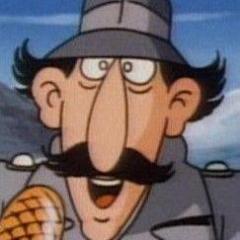
.thumb.png.99648892217b423e18fe027415380d39.png)
